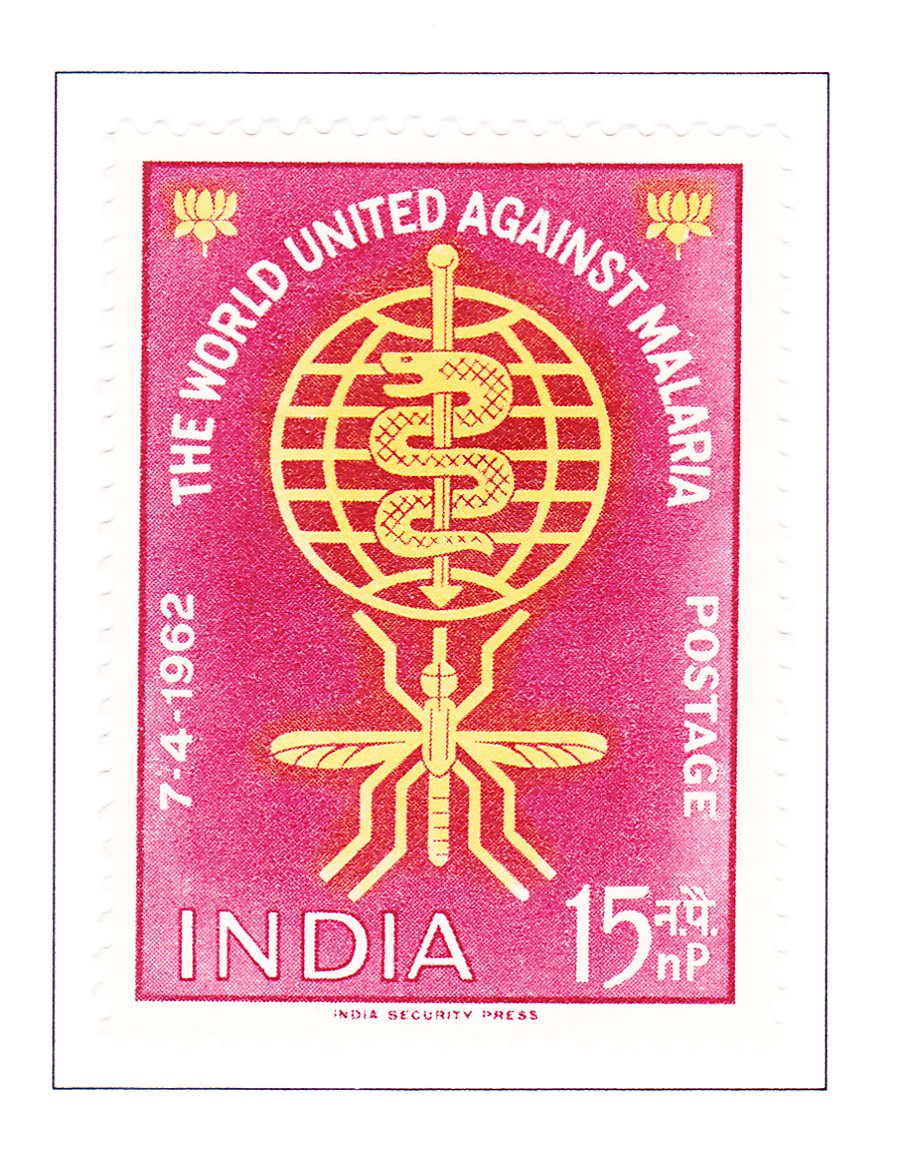Malaria Eradiation

Technical Data
| Date of Issue | April 7, 1962 |
|---|---|
| Denomination | 15 nP |
| Quantity | 3,600,000 |
| Perforation | comb 13 x 13½ |
| Printer | Security Printing Press, Nashik |
| Watermark | Asokan Capital Multiple [Up] |
| Colors | Claret | Yellow |
| Catalog Codes |
Michel IN 340 Stamp Number IN 356 Yvert et Tellier IN 141 Stanley Gibbons IN 454 |
| Themes | Animals (Fauna) | Healthcare | Insects | Malaria | Seals(Emblems) | W.H.O. |
Malaria Eradiation remains one of the most significant global health challenges, causing immense suffering and economic burden worldwide. Despite progress in combating the disease, it still claims the lives of a million people annually, with millions more affected. The eradication of malaria is not just a health imperative but also crucial for economic, social, and cultural advancement.
The World Health Organization (WHO) recognizes the urgency of eliminating malaria and has launched a worldwide campaign to achieve this goal. Significant strides have already been made, with eradication efforts proving successful in many areas. The number of malaria cases has declined from 250 million in 1955 to 140 million, and millions of people now live in malaria-free regions.
India, with its vast population and historical burden of malaria, is actively engaged in a nationwide eradication campaign. The disease has long plagued the country, causing immense suffering and economic losses. However, concerted efforts, including the implementation of the National Malaria Control Programme, have yielded positive results. The programme aimed to protect millions of people living in highly malarious areas, and significant progress has been made in reducing malaria incidence.
The success of pilot projects and the recognition of the potential for eradication led to the launch of a nationwide malaria eradication campaign in 1958. Supported by the United States Technical Cooperation Mission and WHO, the campaign focused on intensive spraying operations and surveillance activities. The goal was to detect and treat every case of malaria systematically, thereby reducing transmission.
Despite facing administrative, technical, and operational challenges, the Indian government has prioritized the malaria eradication programme, allocating significant resources to its implementation. Nearly one-fifth of the nation’s public health budget has been earmarked for this purpose, underscoring the commitment to eliminating malaria once and for all.
In support of the global effort against malaria, the Posts and Telegraphs Department is issuing a special postage stamp on April 7, 1962. This stamp, issued on World Health Day, carries the slogan “The World United Against Malaria” and symbolizes international cooperation in the fight against this deadly disease. The design features the globe representing global solidarity, with the anopheline vector of malaria being targeted for eradication, depicted below, signifying the concerted effort to combat the disease at its source.
